When to Replace Wearable Parts on Floor Scrubbers and Sweepers

Automatic floor scrubbers and sweepers are essential tools for maintaining clean floors in commercial and industrial settings. To ensure these machines continue to operate efficiently, regular inspection and replacement of worn parts is crucial. Your machine will not only clean better but it will also last longer as continuing to use worn out parts leads to more costly wear and tear on mechanical components.
To keep your machine performing at its best, continue reading to learn how to spot worn-out parts, how often to replace them, and tips to extend their lifespan.
Skip to:
Scrub Brushes
Signs of Scrub Brush Wear:
Inspect the bristles of the scrub brushes on your floor scrubber daily. You should replace the brushes once the bristles are worn down to about 3/4" long. However, if you notice the brushes are not cleaning as efficiently anymore or the bristles are bent or frayed, it’s time to replace them regardless of the bristle length.
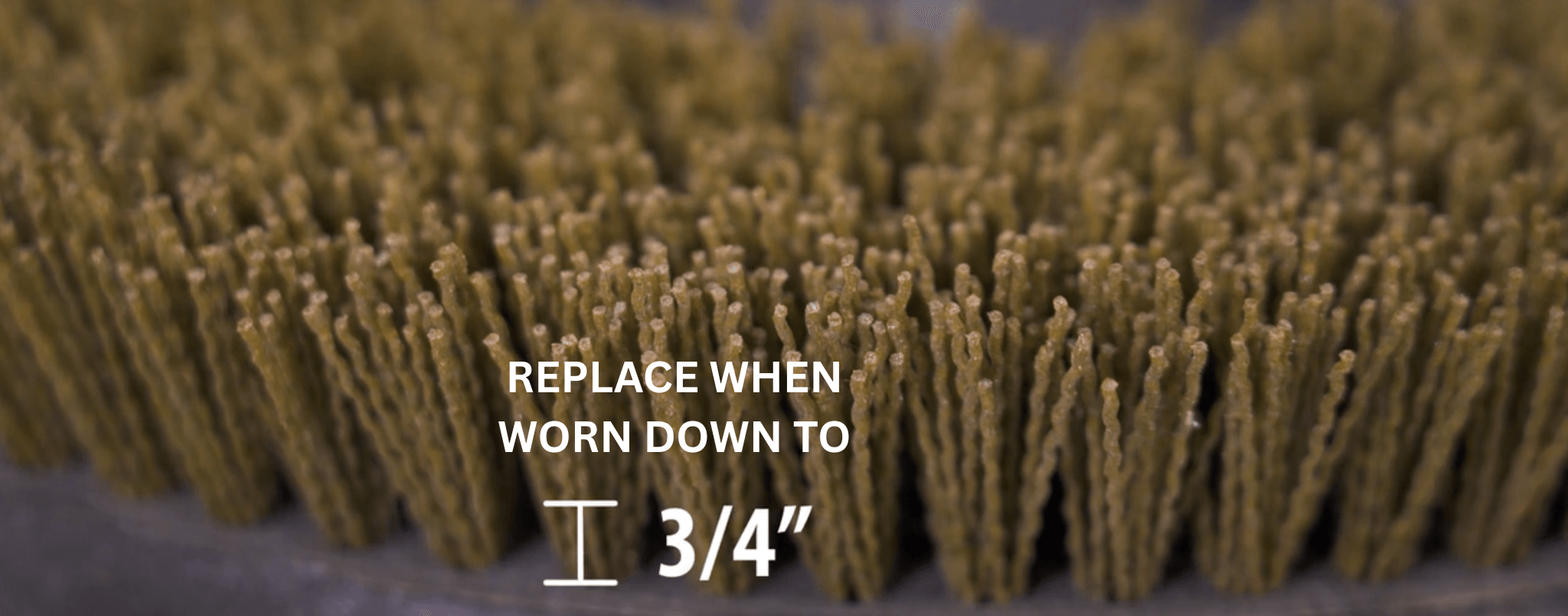
Some brushes have yellow bristles that are shorter than the rest of the bristles. These are called “wear indicator” bristles and serve as a helpful guide for replacement (left image below). Once the remaining bristles are worn down to the same height as these yellow wear indicators (right image below), you must replace the brush.
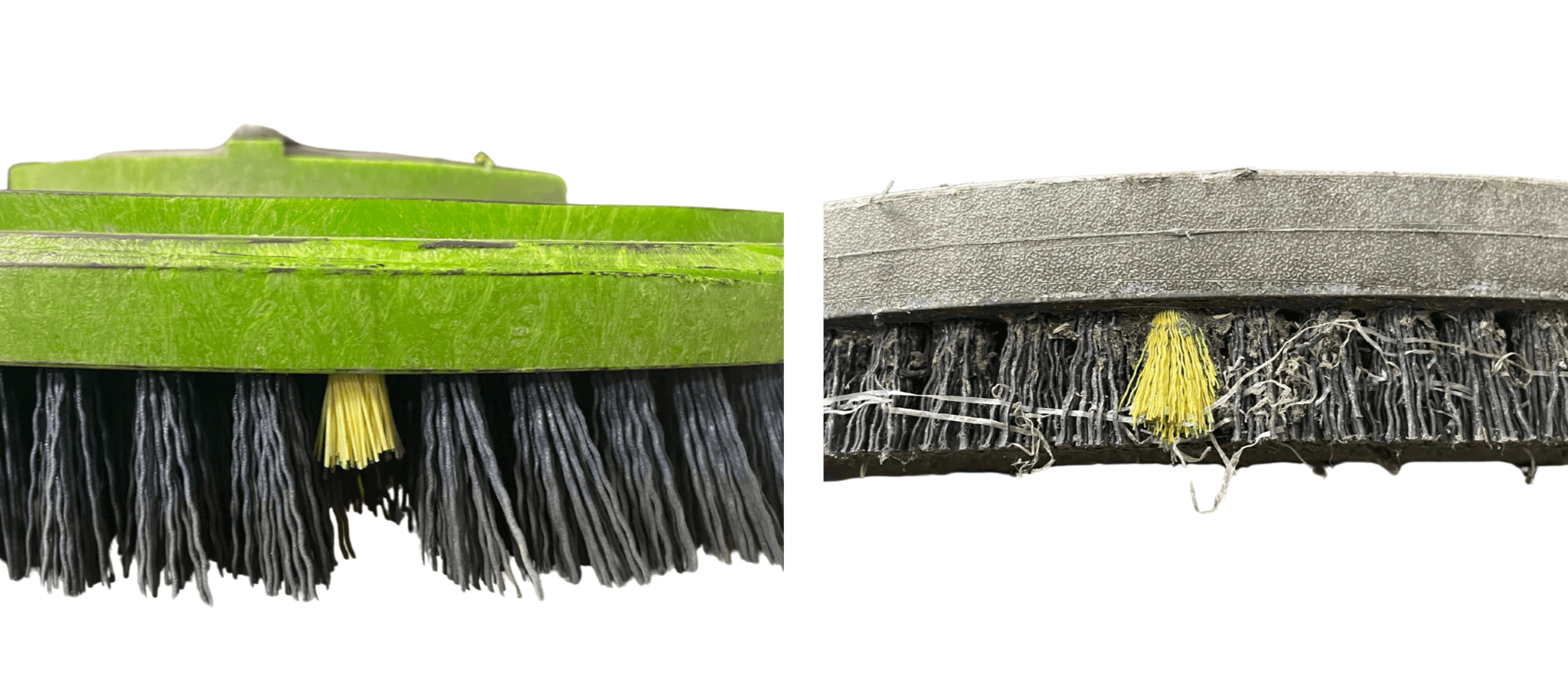
Estimated Scrub Brush Replacement Frequency:
Typically, floor scrubber brushes need replacement every 100-200 hours of use, depending on the type of flooring and the level of dirt.
Here’s how often we estimate you’ll need to replace scrub brushes based on how often you use your floor scrubber:
- 2-3 times a day: replace every 1-2 months
- Once a day: replace every 3 months
- 3-5 times a week: replace every 3-6 months
- Once a week: replace every 6 months-1 year
- 1-2 times a month: replace about once a year
Tips for Extending Scrub Brush Wear Life:
If your scrubber’s brushes are not lasting as long as you expect, you may need to reduce the brush pressure or increase the abrasiveness of the brush. Check out our blog post How to Choose the Right Scrub Brush for guidance on picking the best brush for your floors. Remember, always test a new brush grit on a small section of floor in an inconspicuous area to prevent damage to high traffic areas.
Sweeper Brooms (Floor sweepers or Industrial Sweeper-Scrubbers only)
Signs of Sweeper Broom Wear:
To ensure the sweeper broom is efficiently capturing debris, it is important to closely monitor the condition of the bristles. Sweeper brooms must be replaced once the bristles have worn down about halfway or if there are a significant number that are missing, bent, frayed, or damaged. Damage can be caused by sweeping up large/long materials such as banding and packaging materials, which get wrapped around the broom and can be difficult to remove.
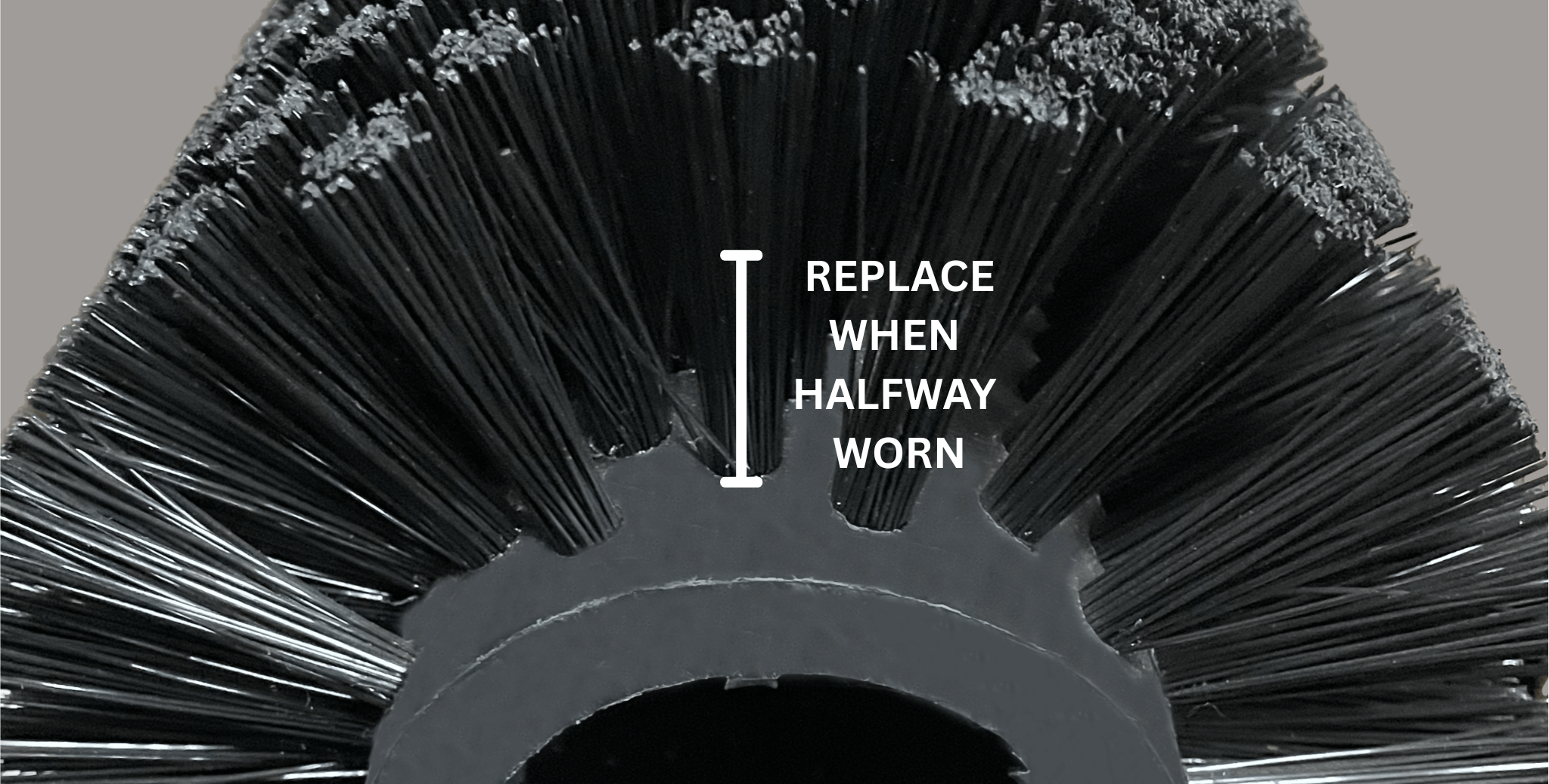
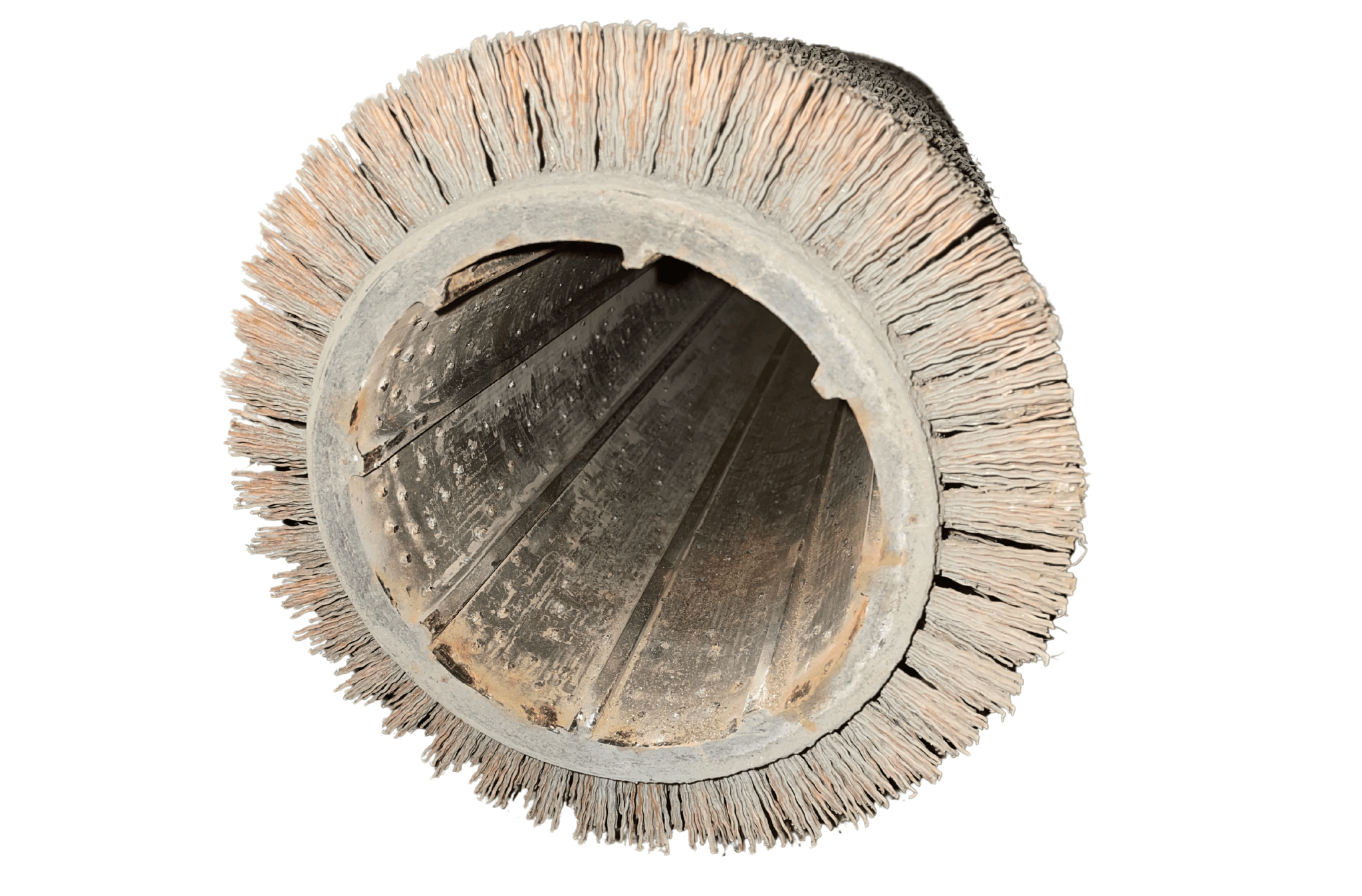
Some sweeper brooms have yellow “wear indicator” bristles that are shorter than the rest of the bristles. Once the remaining bristles are worn down to the same height as these yellow wear indicators, it’s time to replace the broom.
Estimated Sweeper Broom Replacement Frequency:
Floor sweeper broom lifespan varies based on how often they are used and what kind of debris is being swept, but generally need to be replaced every 100-200 hours of use. Improper sweeping practices can also shorten the life of a sweeper broom.
Here's how often you should replace the sweeper brooms based on how often you use your floor sweeper:
- 2-3 times a day: replace every 1-2 months
- Once a day: replace every 3 months
- 3-5 times a week: replace every 3-6 months
- Once a week: replace every 6 months-1 year
- 1-2 times a month: replace about once a year
Tips for Extending Sweeper Broom Wear Life:
Avoid sweeping up banding and packaging materials as this type of material can get caught around the broom and cause permanent damage to the broom. Regularly check for and remove any debris caught in or wrapped around the broom.
There are a variety of styles of sweeper brooms for different applications and floor types. For help choosing the best type for your floors, refer to our blog post, How to Choose the Right Sweeper Broom.
Scrub Pads
Signs of Scrub Pad Wear:
Check the thickness of the scrub pads daily. A standard rule of thumb is to replace scrub pads once they have worn down to ⅜” thick. If the pad is torn, you can see through it, or it just doesn’t seem to be cleaning as well anymore, you should replace the scrub pads regardless of thickness.
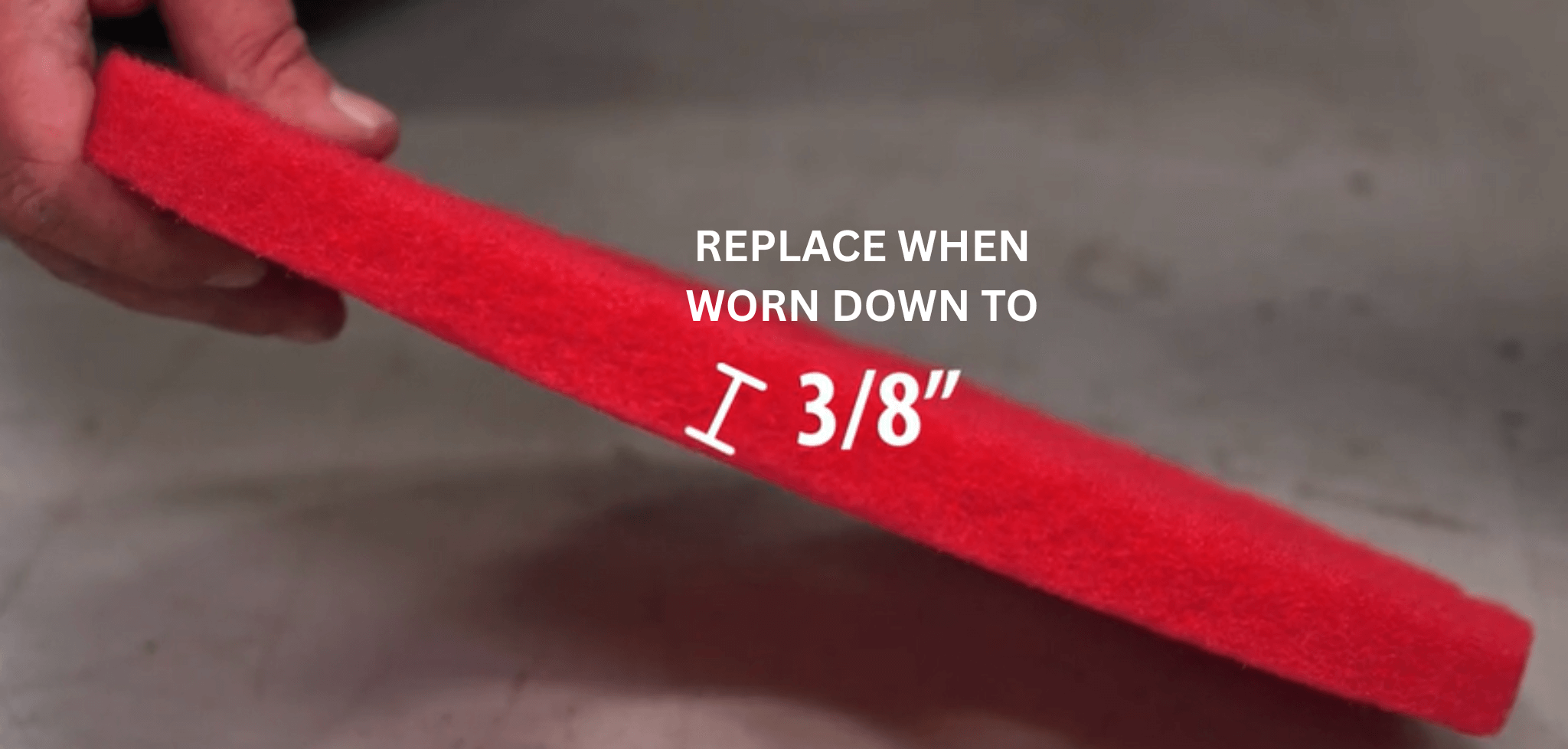
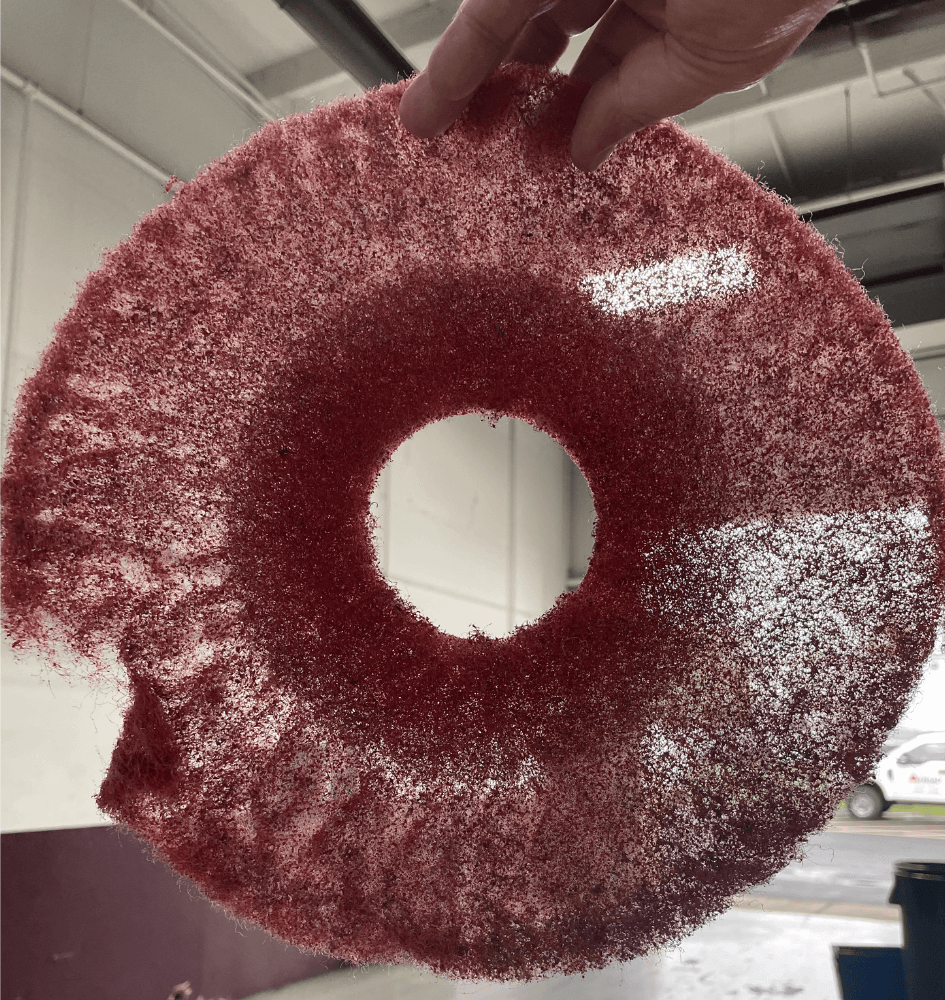
Estimated Scrub Pad Replacement Frequency:
Pads typically need to be replaced more frequently than brushes, around every 50-100 hours of use.
Depending on how often you use your floor scrubber, here’s how often you should replace the scrub pads:
- 2-3 times a day: replace once a month
- Once a day: replace every 1-2 months
- 3-5 times a week: replace every 3 months
- Once a week: replace every 3-6 months
- 1-2 times a month: replace about 6 months-1 year
Tips for Extending Scrub Pad Wear Life:
If your pads are wearing out too quickly, you may need to reduce the pressure of the pad and/or increase the abrasiveness of the pad. For guidance on selecting the best scrub pad, check out our blog post How to Choose the Right Scrub Pad. Remember to always test a new pad grit on a small section of floor in an inconspicuous area to prevent damage to high traffic areas.
Squeegee Blades
Signs of Squeegee Blade Wear:
Regular inspection is key to ensuring effective water pickup and drying. Check your squeegee blades on a daily basis. Once one edge of your squeegee blade is worn down and isn’t picking up water like it used to, flip or rotate the blade to a new edge*. You can utilize all four edges of the squeegee blade before it needs to be replaced, unless it is damaged. If you notice any tears, cracks, or waviness in the squeegee blade, it needs to be replaced.
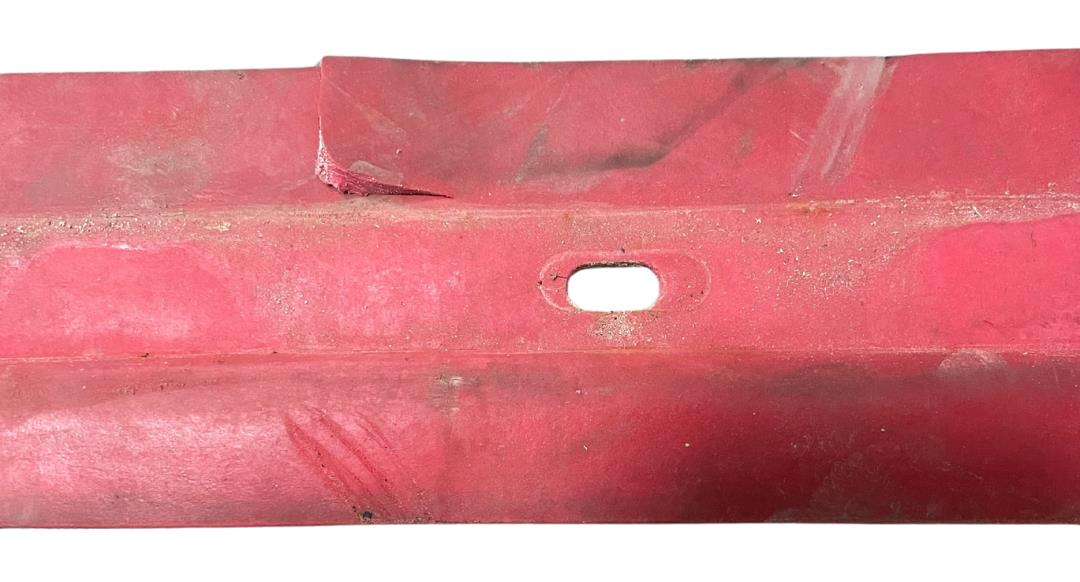
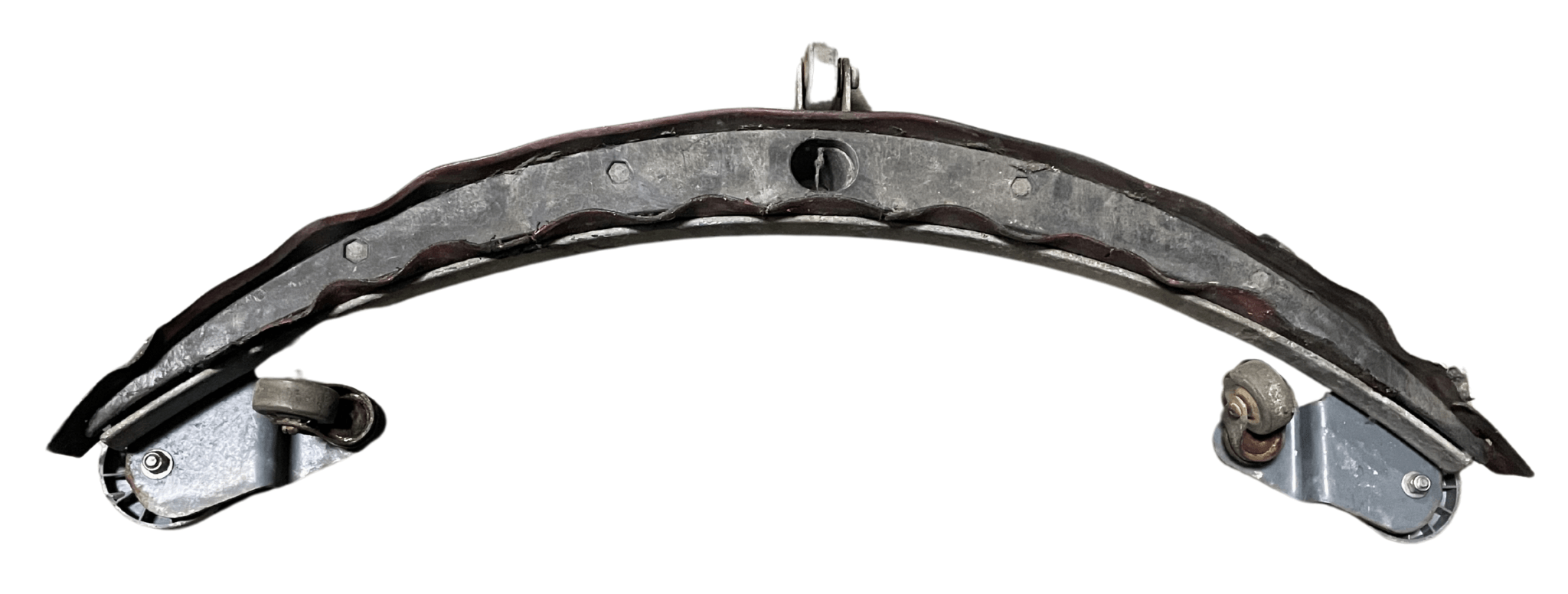
Estimated Squeegee Blade Replacement Frequency:
Squeegee blades generally need to be flipped or rotated to a new edge (see Tips for Extending Wear Life for instructions) every 100-150 hours of use and replaced after all four edges have been worn down or if they are torn, cracked, or wavy . Due to the nature of their material, squeegee blades have a shelf life of about one year. That means that regardless of how often you use your machine, they will likely need to be replaced at least once a year.
Based on how often you use your floor scrubber, here’s how often you should flip/rotate (see Tips for Extending Wear Life for instructions) and replace squeegee blades:
- 2-3 times a day: flip/rotate monthly, replace every 3-4 months
- Once a day: flip/rotate monthly, replace every 4-6 months
- 3-5 times a week: flip/rotate every 2 months, replace every 8 months
- Once a week: flip/rotate every 6 months; replace once a year
- 1-2 times a month: replace about once a year
Tips for Extending Squeegee Blade Wear Life:
To make the most of your squeegee blades, utilize all four edges by flipping and rotating regularly. Once an edge of your squeegee blade is worn, you can flip the squeegee blade around to use the other edge of the same long side of the blade. After both edges of the same long side of the blade have been worn, you can flip the squeegee upside down and then use both edges on the other long side of the blade.
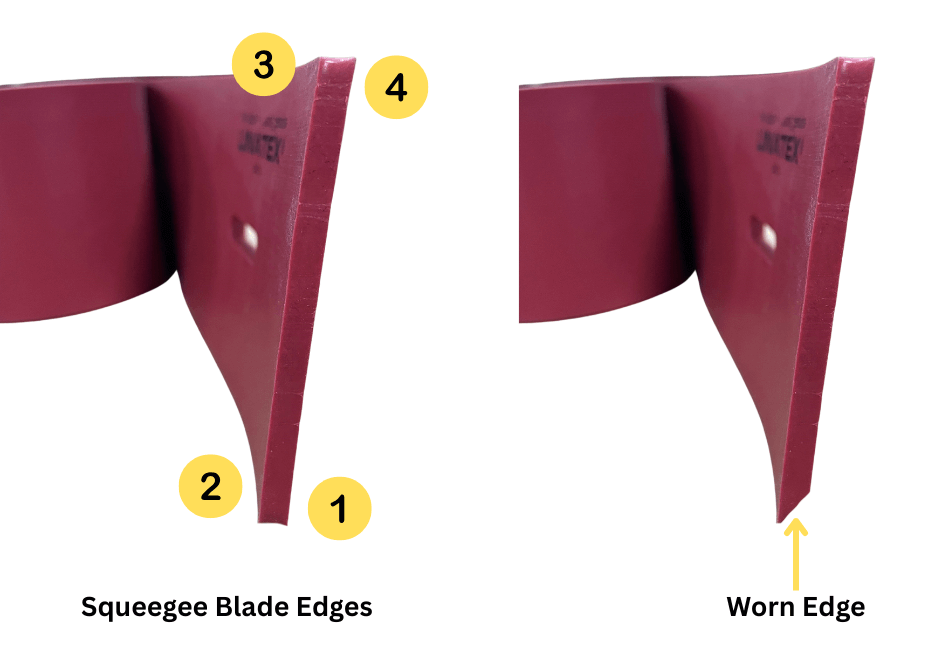
Make sure your squeegee blades are set to the right pressure and angle, as this can cause excessive wear. See the diagram below for the positioning:
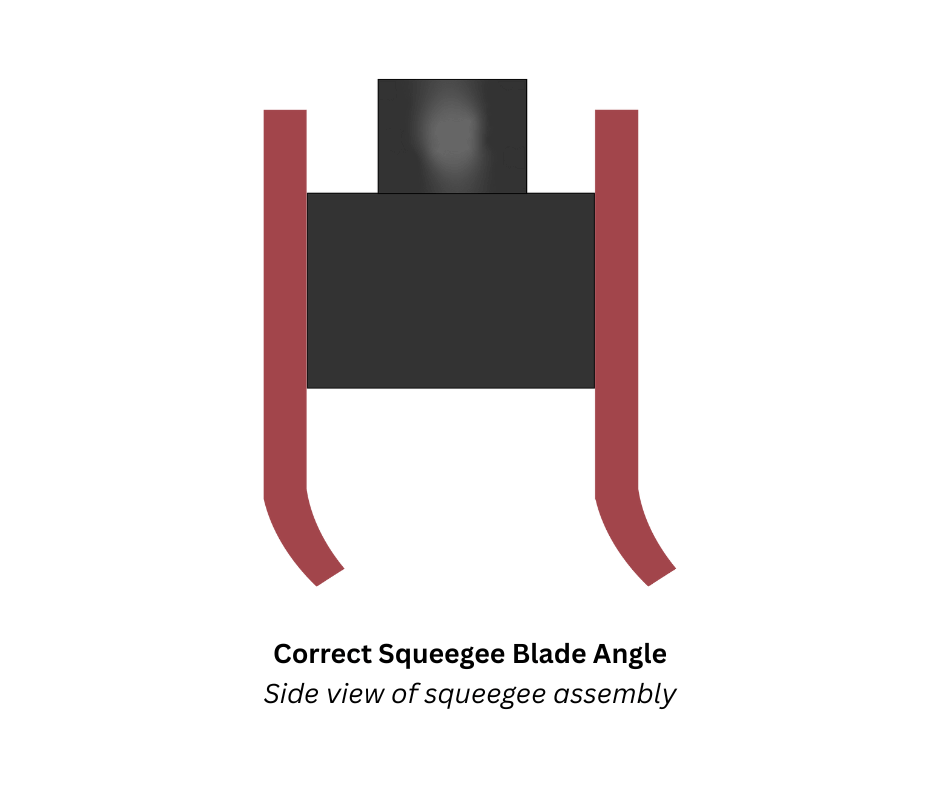
Be sure to only use recommended cleaning chemicals/solutions to prevent your squeegee blades from disintegrating. We recommend using Clean & Green™ Super Concentrate.
If you have taken all the above precautions and your squeegee blades are still not lasting as long as you would like, you may be using the wrong kind of squeegee blade for your floors. Check out our blog post Everything You Need to Know About Squeegee Blades for help choosing the right type.
Vacuum Filters
Signs of Vacuum Filter Wear:
The vacuum filter on your floor scrubber or sweeper should be checked and rinsed* after every use to make sure it is free of debris. If you notice a reduced suction power or the filter is deteriorating or is clogged and can’t be cleaned out, the filter needs to be replaced.
*If your machine only has a sweep function (no water involved), the vacuum filter could be damaged by water. To clean the filter, vacuum or shake it out instead.
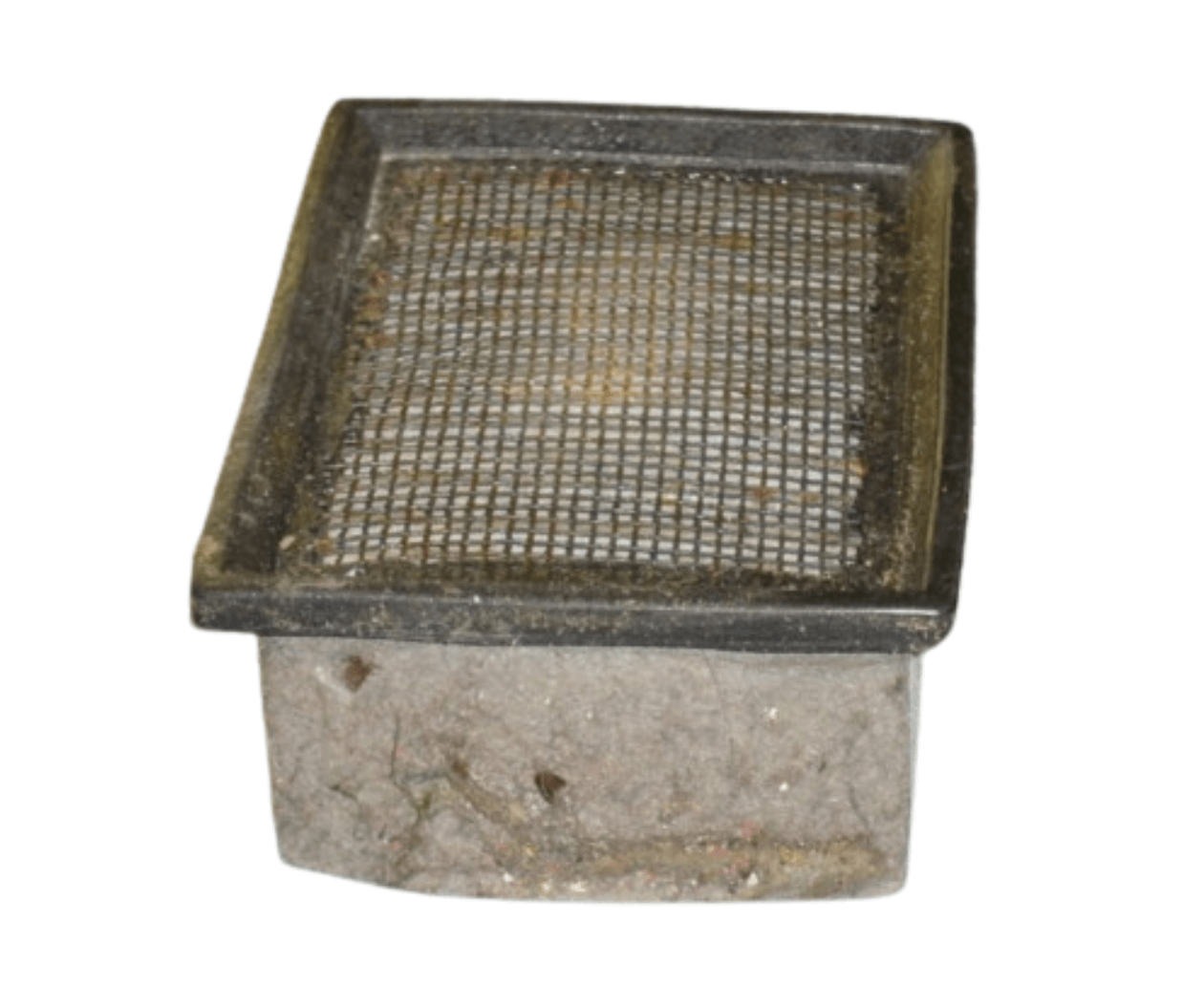
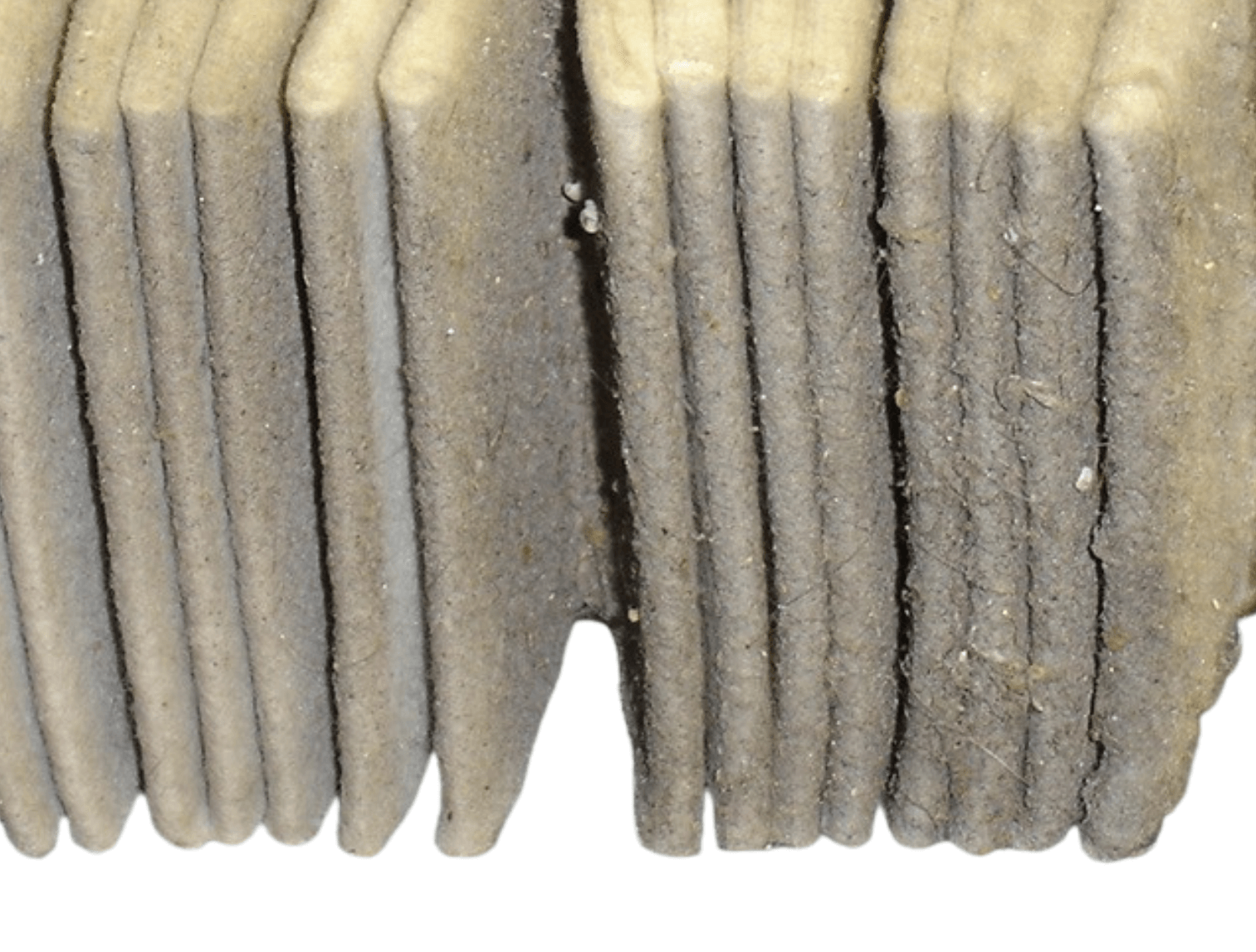
Estimated Vacuum Filter Replacement Frequency:
Vacuum filters should be replaced at least once a year. However, depending on the level of dirt or dust in your environment and how often you use your machine, the vacuum filter may need to be replaced much more frequently.
Here’s a rough estimate of how often you should replace your vacuum filter based on how often you use your floor scrubber or floor sweeper:
- 2-3 times a day: replace every 3 months
- Once a day: replace every 4-6 months
- 3-5 times a week: replace every 6 months
- Once a week: replace 6 months-1 year
- 1-2 times a month: replace once a year
Tips for Extending Vacuum Filter Wear Life:
Clean the vacuum filter after every use. For vacuum filters on scrubbers, the easiest way to clean the filter is to rinse it with water. However, if you have a sweeper that does not have any scrub functions (in other words, there’s no water involved) do NOT use water to clean the filter as this may damage it. Instead, vacuum or shake out the filter.
Hoses
Signs of Hose Wear:
Inspect the drain hose and solution hose for cracks and leaks. If your hose is being held together by duct tape or some other makeshift “fix”, it should be replaced as this impacts the performance of the machine.
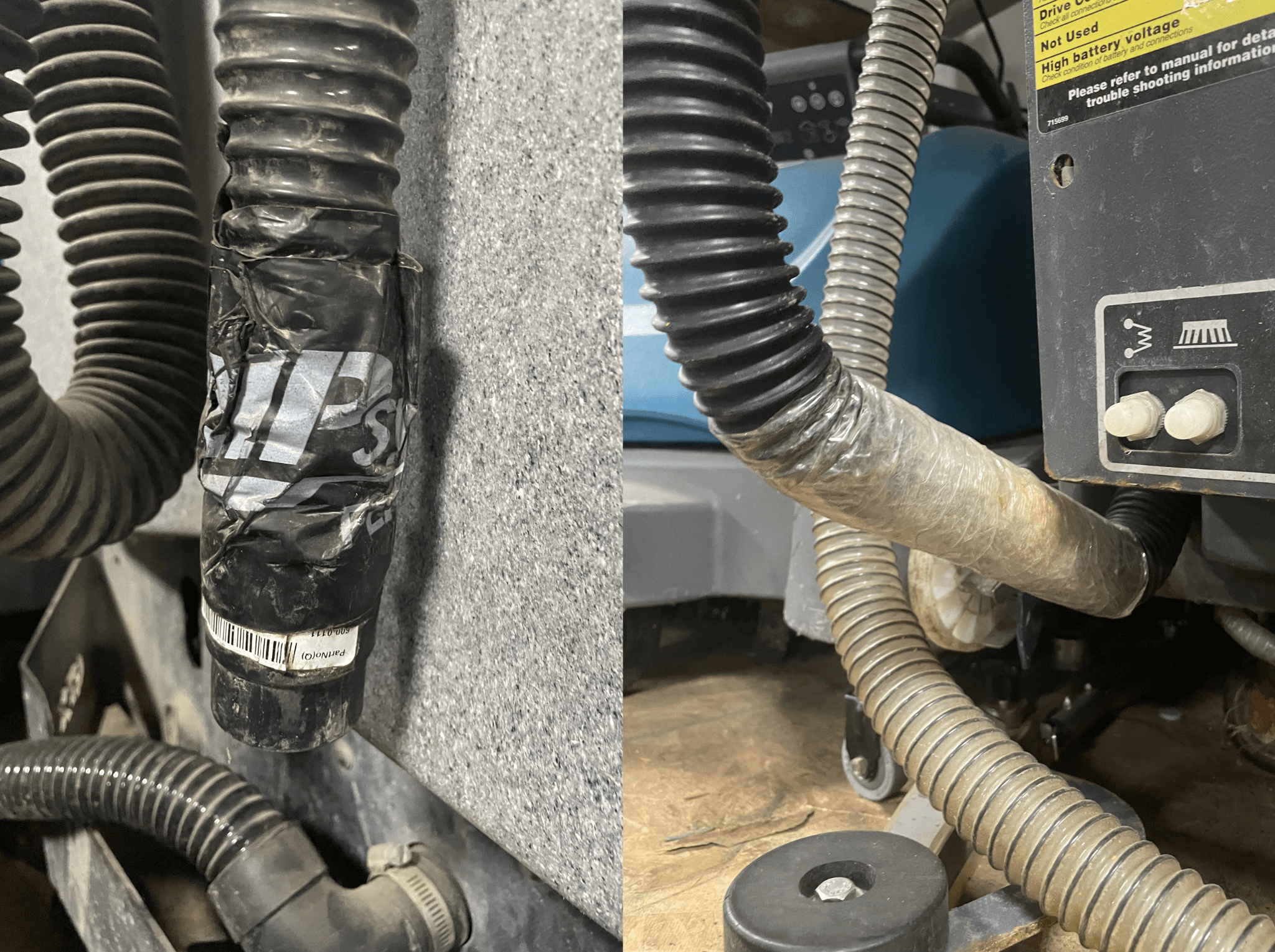
Estimated Floor Cleaner Hose Replacement Frequency:
Hoses should be inspected monthly and replaced as needed when they are damaged.
Tips for Extending Hose Wear Life:
Hoses can last a long time if they are used with care. Make sure the solution and drain hoses are properly stored when not being drained. When draining, be sure to set each hose down gently instead of tossing it on the ground as this can damage them. Regularly rinse out the drain hose to prevent build up of debris and clogs.
Replacement Frequency May Vary
It's important to note that the replacement frequencies listed above are just an estimate and can vary depending on the type of floor and debris you are cleaning and how often you use your machine. You may need to replace parts more or less frequently, but by using our guidelines you'll be able to figure out the right schedule of replacement for your machine.
Don't want to replace wearable parts yourself? Let us do it for you!
Our scheduled maintenance plans can be customized to your specific needs so you can have the peace of mind that your machine is always good to go without the hassle of remembering to replace parts yourself.
Perks of the Program:
- No more tracking and replacing parts yourself
- Fully customizable to fit your needs and schedule
- Save up to 24% on overall maintenance costs
- Decrease downtime by addressing wear & tear before it becomes an issue
- Extend the life of your equipment
- Enjoy peace of mind with expert care
Click here to request information about our scheduled maintenance program
As always, feel free to reach out to us if you have any questions.
Call us: (888) 834-9948
©





